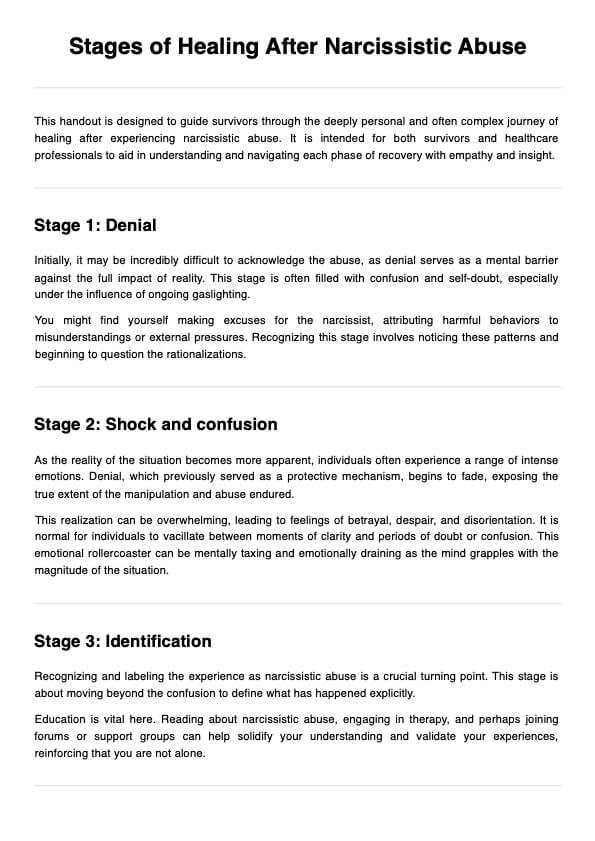Yes, there are many support groups available for individuals recovering from narcissistic abuse, both online and in person, offering a community of peers who understand and share similar experiences.

Stages of Healing After Narcissistic Abuse
Explore the stages of healing from narcissistic abuse and gain insights on recovery with this comprehensive guide.
Stages of Healing After Narcissistic Abuse Template
Commonly asked questions
Survivors of narcissistic abuse can get help by seeking therapy from professionals experienced in dealing with narcissistic abuse, joining support groups, and educating themselves about narcissism to understand their experiences better.
Finding oneself again after a narcissistic relationship involves engaging in self-care practices, reconnecting with your interests and passions, and possibly seeking the guidance of a therapist who specializes in recovery from emotional abuse.
EHR and practice management software
Get started for free
*No credit card required
Free
$0/usd
Unlimited clients
Telehealth
1GB of storage
Client portal text
Automated billing and online payments











